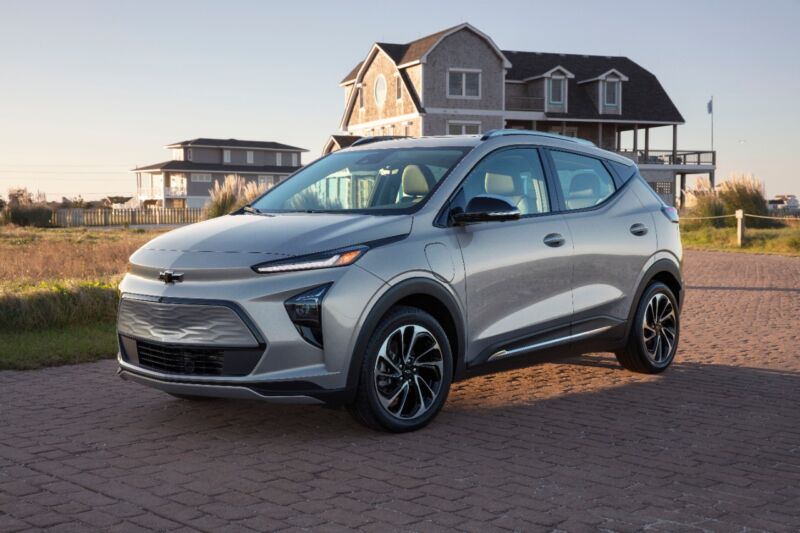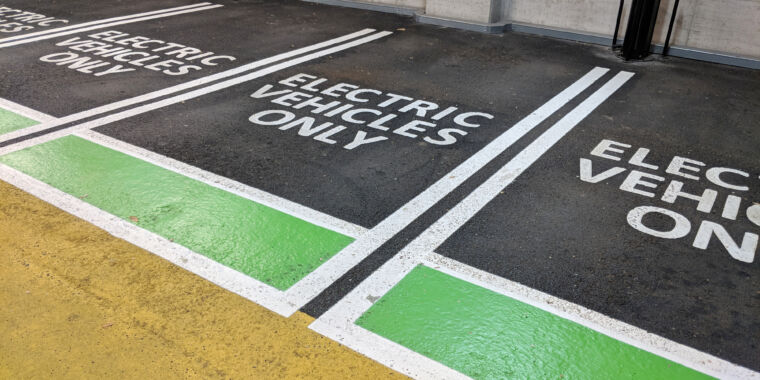EV bargains to be found as Hertz sells off some of its electric cars
tell me where it hertz —
More than 1,200 EVs are cheap enough to qualify for the used clean vehicle tax credit.

Enlarge / Hertz currently has more than a thousand Bolt EUVs for sale as they leave its rental car fleet.
Chevrolet
Electric vehicles have many advantages over cars that still use internal combustion engines. They’re far more efficient, they’re quieter, and they usually have much more torque than their gasoline-powered equivalents. But we’re still far from achieving price parity between powertrains. In other words, EVs are expensive.
One place you can find some bargains, though, is the rental company Hertz, which currently has more than 2,100 EVs for sale, more than half of which are affordable enough to qualify for the IRS used clean vehicle tax credit.
Hertz has been adding a lot of EVs to its fleet as part of the company’s decarbonization plan. In 2021, it revealed plans to purchase 100,000 Teslas. However, the controversial car maker had delivered fewer than half of those two years later, and long repair times for customer-inflicted damage have seen the rental agency divest itself of many of those Teslas and diversify its fleet, adding plenty of Polestars, Kias, and Chevrolets.
This January, we learned that Hertz plans to sell off about 20,000 of its EVs, and there are currently 2,115 EVs up for grabs among the 31,134 cars for sale on its used car sales site.
There are 761 Teslas for sale, 63 of which are Models 3 priced at less than $25,000—the price cap for the IRS used clean vehicle tax credit. Some of them have been around the block a few times, with more than 90,000 miles on the odometer (145,000 km), but there are others with less than 50,000 miles (80,500 km) on them.
Better bargains are available if you want a Chevy Bolt—Hertz currently has 1,178 Bolt EUVs (and another eight Bolt EVs) for sale. All of these are cheap enough to qualify for the used clean vehicle tax credit, and plenty of them are low-mileage examples with less than 10,000 miles (16,000 km) on the clock.
There are a handful of other makes and models of EVs also available. You could pick from one of 126 Subaru Solterras, for example, which range from $27,027 to $33,002. And there are 42 Kia EV6s, ranging from $27,120 to $39,901. These are too expensive for the used clean vehicle tax credit, though.
Not everyone reading this will feel entirely comfortable buying an ex-rental car, given the hard lives that such vehicles often lead. But if you’re feeling brave, there are some big savings to be had versus buying new. Anecdotally, the only thing that went wrong with the ex-rental Ford Ka I used to own was a worn-out clutch—not a problem an EV will suffer from.
EV bargains to be found as Hertz sells off some of its electric cars Read More »


